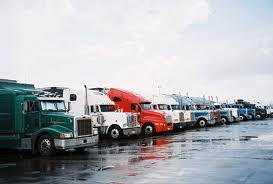| |
|
| |
|
 |
Supply
Chain by the Numbers |
| |
|
| |
- May 6, 2020 -
|
| |
|
| |
|
| |
|
| |
Amazon Q2 Profit All Going to Virus Spend; Walmart has New Premium Delivery Service; Asian Apparel Makers not being Paid; Virus Economy Changing Trucking Patterns Significantly |
| |
|
| |
| |
| |
| |
$4 Billion |
|
That's how much Amazon said it would have expected to see in Q2 operating income – except now it plans to spend all of that on a variety of coronavirus initiatives and safety measures. That according to Amazon's Q1 earnings call late last week, where the company said revenue was up another 26% to an amazing $75.5 billion. That pushed net income to $2.5 billion, or about 3.3% of sales. That plan Q2 virus spend includes big investments in Covid-19 tests for workers and beefing up its delivery network to get packages to customers on time. In fact, Amazon expects to spend an amazing $1 billion on Covid-19 testing in the full year 2020, including building its own testing labs. Some of the $4 billion will also fund higher wages for workers, personal protective equipment, better cleaning protocols at facilities and "less efficient process paths" for fulfilment center that will allow for social distancing in the crowded FCs. In other words, FC workers may be given new so-called "pick paths" from its Warehouse Management System that require more travel time, the key driver of order picking costs, but will workers to stay safe distances away with each other.
|
|
|
| |
| |
|
|
|
That is how much an apparel manufacturer from Bangldesh expected to be paid shortly after it shipped a huge number of jeans in February to Los Angeles to fulfil an order by a western apparel company. Now, according to an article in the Wall Street Journal this week, three months later the clothes maker still hasn't received its money and doesn't know where the jeans are. The company's owner expected payment shortly shipping, as was the usual arrangement. But that was before the virus. Disputes like these have exploded across the garment industry as payments are delayed and orders are canceled by retailers dealing with closed stores and plunging sales. Factories in Asia that have paid raw-material, labor and other costs are in desperate times, and many of them are realizing they have little recourse as apparel contracts have shifted to give importers more flexibility. |
| |
| |
|
| |
| |
18.2% |
 |
That was the percent of trips by US truckload carriers of less than 100 miles during March and April. That compares to just 7.8% of trips before the virus crisis began. That according to a new report released jointly by the American Transportation Research Institute (ATRI) and the Owner-Operator Independent Drivers Association (OOIDA), based on a survey of more than 5000 carriers and drivers. The research also found that the number of long-haul trips of more than 1,000 miles dropped by 10 percentage points to 22.7%, as capacity and freight demand shift away from longer-haul, one-way truck lanes as the COVID-19 pandemic and recession reshape the transportation landscape. |
| |
| |
| |
| |
| |
|
|
|
| |
 |
 |
| |
 |
![]() |
 |
|
| |
 |
Feedback |
|
|
|
![]()
|
No Feedback on this article yet.
|
|
![]() |
|
|
|
![]() |
 |
![]() |
 |
|
| |